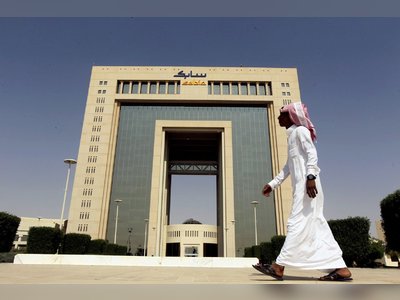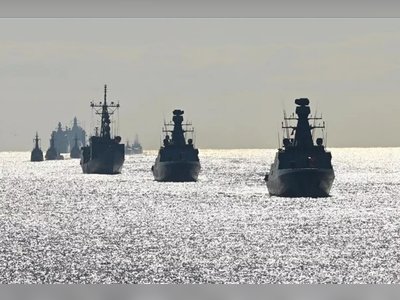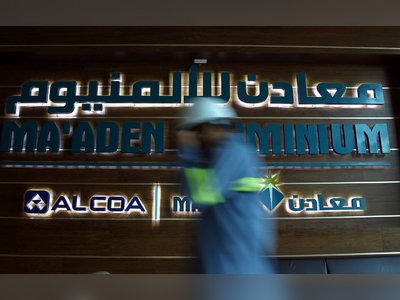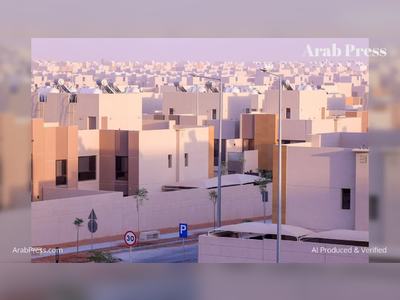
The Red Shore of Hormuz Island: A Geological Wonder
Rare natural phenomenon on Iran's Hormuz Island attributed to high iron oxide concentration in the soil.
Hormuz Island, located in the Persian Gulf and home to approximately 3,000 residents, has recently garnered attention for a striking and unusual natural event.
Following significant rainfall in the region, the waters and sands surrounding the island transformed into a vivid red hue, leading to a phenomenon colloquially dubbed by some as a 'waterfall of blood'.
Historically referenced by the Moroccan explorer Ibn Battuta in the 13th century, Hormuz was noted for its bustling trade markets.
However, the recent occurrence has reshaped perceptions of the island, with social media videos displaying the dramatic transformation resulting from rainwater interacting with the island's high iron oxide content in the soil.
The island's striking coloration mirrors that of Spain’s Rio Tinto, where similar mineral concentrations create a deep red appearance in water.
When the rains wash over the iron-rich surfaces, the reflected hues can paint both the sea and sands with rich tones that perplexed initial observers, who mistook the sight for something more sinister.
Iron oxide, a compound of iron and oxygen, serves various purposes, including use as natural pigments in cosmetics and food products, as well as in the production of traditional breads such as 'Tomshe'.
Its industrial applications also extend to creating colors for textiles and ceramics.
Local culinary practices utilize iron oxide pigments in dishes, enhancing the area's rich cultural heritage through the preparation of specialties like 'Surakh', a fish and rice soup reflective of local flavors.
Red ochre, known locally as 'Jalak', has emerged as a significant export, attracting tourism and fostering economic opportunities.
The ochre consists of iron oxide mixed with clay and sand and varies in shades from yellow-brown to vibrant red, creating a visually stunning environment.
A geological treasure, the Rainbow Valley, is located in the southwestern part of the island and showcases a mosaic of over 70 colors due to its diverse mineral composition.
Geologically, Hormuz Island is 600 million years old and is a product of tectonic forces that shaped the Arabian Gulf.
The collision between the Arabian and Eurasian plates led to the formation of folded mountains and sedimentary basins, concentrating iron-rich minerals critical to the island's unique color.
The process of oxidation of hematite, known for its iron content, contributes to the striking red sands that characterize the shoreline, distinctively contrasting with the blue waters.
The island's climate plays a pivotal role in the sand’s coloration.
With relatively low rainfall and limited vegetation cover, the area experiences accelerated erosion of iron-rich rocks, resulting in the accumulation of reddish fine sediments along the coast.
The vibrant coloration of the beach shifts throughout the day, influenced by sunlight interacting with the iron and salt particles, enhancing the surreal beauty of this landscape, which continuously captures the attention of photographers and geologists alike.
Following significant rainfall in the region, the waters and sands surrounding the island transformed into a vivid red hue, leading to a phenomenon colloquially dubbed by some as a 'waterfall of blood'.
Historically referenced by the Moroccan explorer Ibn Battuta in the 13th century, Hormuz was noted for its bustling trade markets.
However, the recent occurrence has reshaped perceptions of the island, with social media videos displaying the dramatic transformation resulting from rainwater interacting with the island's high iron oxide content in the soil.
The island's striking coloration mirrors that of Spain’s Rio Tinto, where similar mineral concentrations create a deep red appearance in water.
When the rains wash over the iron-rich surfaces, the reflected hues can paint both the sea and sands with rich tones that perplexed initial observers, who mistook the sight for something more sinister.
Iron oxide, a compound of iron and oxygen, serves various purposes, including use as natural pigments in cosmetics and food products, as well as in the production of traditional breads such as 'Tomshe'.
Its industrial applications also extend to creating colors for textiles and ceramics.
Local culinary practices utilize iron oxide pigments in dishes, enhancing the area's rich cultural heritage through the preparation of specialties like 'Surakh', a fish and rice soup reflective of local flavors.
Red ochre, known locally as 'Jalak', has emerged as a significant export, attracting tourism and fostering economic opportunities.
The ochre consists of iron oxide mixed with clay and sand and varies in shades from yellow-brown to vibrant red, creating a visually stunning environment.
A geological treasure, the Rainbow Valley, is located in the southwestern part of the island and showcases a mosaic of over 70 colors due to its diverse mineral composition.
Geologically, Hormuz Island is 600 million years old and is a product of tectonic forces that shaped the Arabian Gulf.
The collision between the Arabian and Eurasian plates led to the formation of folded mountains and sedimentary basins, concentrating iron-rich minerals critical to the island's unique color.
The process of oxidation of hematite, known for its iron content, contributes to the striking red sands that characterize the shoreline, distinctively contrasting with the blue waters.
The island's climate plays a pivotal role in the sand’s coloration.
With relatively low rainfall and limited vegetation cover, the area experiences accelerated erosion of iron-rich rocks, resulting in the accumulation of reddish fine sediments along the coast.
The vibrant coloration of the beach shifts throughout the day, influenced by sunlight interacting with the iron and salt particles, enhancing the surreal beauty of this landscape, which continuously captures the attention of photographers and geologists alike.











